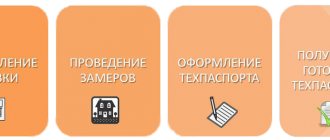What is a mortgage by law?
The word “mortgage” itself means the purchase of real estate as collateral for real estate - either the one that was purchased as a result of receiving a loan, or the one that the borrower owned before contacting the bank.
Buying real estate is, first of all, a transfer of ownership rights, registered in Rosreestr. When a new right arises (the owner of the property changes), then the transaction is considered completed. But the order in which property rights are transferred and what is pledged is the answer to the question of what a mortgage means by force of law.
In simple terms, a mortgage, by virtue of the law according to the Civil Code of the Russian Federation, is a transfer of ownership rights to real estate as a result of receiving a loan from a bank . That is, the bank issued a loan and the money was used to buy housing.
Legally, this means that registration of a new home owner is carried out in accordance with Article 77 of the Federal Law of July 16, 1998 No. 102-FZ “On Mortgage (Pledge of Real Estate" or Article 488, paragraph 5, Article 587, paragraph 1 of the Civil Code Russian Federation.
A transaction by force of law is not only the most common scheme of action among all banking organizations in Russia, but also the safest and legally verified.
Statement of claim for removal of encumbrance
According to Part 1 of Art. 352 of the Civil Code of the Russian Federation, the pledge is terminated with the termination of the obligation secured by the pledge. The termination of the mortgage must be noted in the register in which the mortgage agreement is registered (clause 2 of Article 352 of the Civil Code of the Russian Federation of the Russian Federation).
July 20, 2009 between Ivanov I.I. and Gazprom Transgaz LLC entered into a purchase and sale agreement for an apartment with an area of 53.6 sq.m., cadastral number 00:00:0110105:0:2/2, located at the address: Ivanovo region, Ivanovo district, village. Ivanovka, st. Ivanovka, 1. Payment under the purchase and sale agreement dated July 20, 2009. was made partially in monthly payments, and therefore this apartment is pledged to Gazprom Transgaz LLC. The ownership of the above property was registered in the name of Ivanov I.I. 07/31/2009 Simultaneously with the registration of property rights, an encumbrance was registered in the form of a pledge by force of law for 6 years 6 months, which is confirmed by an Extract from the Unified State Register of Real Estate dated July 11, 2020.
We recommend reading: PFR deprived of compensation for large families
What properties does it apply to?
- A residential property in exploitable condition - a house or apartment - purchased partially or fully with loan funds from the bank;
- Any product, including commercial and residential real estate (it does not matter what operating status the product has), for which an installment plan or loan was issued. Such goods remain pledged to the seller until the last payment for the property is made;
- Any piece of real property obtained as a result of the execution of a rental agreement.
But it is no longer possible to obtain a mortgage for the following types of real estate by virtue of the law :
- If housing or real estate cannot be privatized - or, conversely, are subject to mandatory privatization by law;
- If the objects were withdrawn from circulation (excluded from the list of operating buildings due to emergency conditions or other reasons);
- If an object of real estate cannot be recovered in any way due to the restrictions in force in relation to it.
Rosreestr clarified some issues of registering and removing a mortgage
your apartment will be pledged to the organization that provided you with the loan until the loan is fully repaid.
A record of the mortgage will be entered into the Unified State Register of Rights simultaneously with the state registration of the buyer's ownership of this apartment. When submitting documents to the Rosreestr Office, a separate application for mortgage registration is not required by law, and no state fee is charged.
We recommend reading: In what cases is a driver’s medical certificate required?
From a legal point of view, encumbrance of real estate does not deprive the owner of the rights to own his property, but only limits the ability to perform a number of actions with it - purchase and sale, donation and other actions provided for by current legislation.
How to remove the encumbrance? CLARIFICATION: Credit institutions did not participate in the transaction - installments were paid to the seller precisely because of the missing amount, an encumbrance was imposed.
What is best for the borrower?
It cannot be summed up unequivocally that one format brings more benefits to the borrower, and another less. It all depends on the situation.
A mortgage loan is legally convenient and beneficial to all parties to the transaction if everything goes “on the beaten path,” i.e. there are no conditions and requirements, only upon the occurrence of which registration or transfer of funds must occur, there are no additional parties to the transaction, or any other difficulties.
But these advantages become irrelevant as soon as nuances appear in the transaction that are not regulated by the standard package of legal documents. Then, on the contrary, it is the mortgage loan that, by virtue of the contract, can provide the greatest protection to both the borrower and the other parties, because
the agreement will further clarify and legitimize those very nuances not regulated by law.
Grounds for the emergence of a mortgage
From a legal point of view, a mortgage is a pledge of real estate. The property pledged guarantees the security of the borrower's obligations to the lender, and in case of failure to fulfill them, the lender will have the right to sell it and use the money received to pay off the client's debt.
The current legislation of the Russian Federation provides for 2 types of grounds for the emergence of a mortgage:
- Mortgage by force of law.
- Mortgage by virtue of an agreement.
Normative base
The main legislative act regulating mortgage issues is the law of July 16, 1998 No. 102-FZ “On mortgage (real estate pledge)”. It was there that the concepts of mortgage “by force of law” and “by force of contract” were introduced.
The first means the relationship that arises between the pledgor and the pledgee as a result of the occurrence of certain circumstances, regardless of the wishes of the parties. The second reflects the situation when the parties to the transaction explicitly express their will regarding the agreement to secure obligations and the subject of the pledge.
Features of state registration of mortgages by virtue of law and agreement are standardized by Art. 20 of Law 102-FZ and Art. 53 of the Law of July 13, 2015 No. 218-FZ “On State Registration of Real Estate”.
Pledge of real estate: a little theory and practice
The transfer of real estate as collateral (mortgage) is a way to ensure the fulfillment of the obligations of the mortgagor to the mortgagee. It lies in the fact that the mortgagor (owner of square meters) is limited in the right to dispose of his property until the fulfillment of obligations to the mortgagee.
For the latter, on the contrary, a pledge means the right to dispose of property upon the occurrence of certain circumstances.
Most often, real estate collateral, especially residential, is used when issuing bank loans to individuals.
Real estate is one of the most expensive objects, so the size of loans for it can reach significant amounts. Thus, Sberbank for most mortgage programs indicates only the minimum loan amount, and the online calculator allows you to make calculations for tens of millions of rubles.
As a rule, mortgage loans are issued against the security of purchased real estate; in this case, simultaneously with the transfer of rights to the buyer, a mortgage arises by force of law. Indeed, for many, an apartment purchased with borrowed funds is the only asset for which banks are willing to lend money.
But another option is also possible: the borrower takes out a loan from the same Sberbank for any purpose secured by real estate. Here a mortgage already arises by virtue of an agreement, and loan funds are used, for example, to purchase new real estate or for other purposes.
Real estate pledge
2.
Living space. built in whole or in part using savings to provide housing for military personnel. provided under a targeted housing loan agreement in accordance with Federal Law
“On the savings-mortgage housing system for military personnel”
, is considered to be pledged to the Russian Federation from the moment of state registration of ownership of it (clause
4 tbsp. 77 Federal Law)
Thus, Art. 25 of the Law on Mortgage directly provides for a method of protecting the violated right of the mortgagor (rent payer): filing a demand for termination in court or arbitration court, which corresponds to paragraph.
11th century 12 of the Civil Code of the Russian Federation. In accordance with Art. 12 of the Registration Law, only making an entry in the Unified State Register of Mortgages by force of law is confirmation by the state of the encumbrance of real estate arising on the basis of the law.
We recommend reading: Selling a car in installments
Distinctive features
Correct classification of existing legal relations within the framework of collateral obligations will allow not only to register the encumbrance according to the rules, but also to determine whether payment of state duty is necessary in a particular case.
For easy understanding, the distinctive features are presented in a table.
| Mortgage by force of law | Mortgage by agreement | Reason for occurrence | A loan agreement that establishes a legal requirement for collateral. | Mortgage (collateral) agreement | Purpose of the loan | Funds are provided exclusively for the purchase of real estate (apartment, house, commercial premises). | The loan is issued for any purpose, including those not related to real estate (business development, recreation, training and others). | Emergence of rights to property pledged as collateral | Ownership of real estate is registered simultaneously with the registration of the encumbrance. | At the time of registration of the pledge, the property belongs to the pledgor. |
Registration of a mortgage by force of law is relevant for all mortgage loans, including those issued under special government programs. Encumbrance of property under the rules of mortgage by virtue of an agreement is used by representatives of large and medium-sized businesses to open a line of credit or obtain loans for the development of their activities, as well as by individuals in mutual lending secured by real estate.
A mortgage is an encumbrance of real estate with collateral. A mortgage is most often understood as an encumbrance in connection with obtaining a loan for the purchase of real estate.
A mortgage loan secured by real estate can be issued in different ways: through a separate collateral agreement or by drawing up a real estate purchase and sale agreement, which will indicate the use of loan funds. The type of mortgage that arises depends on the choice of the method of registration of collateral.
Subsequent pledge
Subsequent collateral is the transfer of one object as collateral under several loan agreements. In the case of a mortgage by virtue of an agreement, the subsequent mortgage is formalized by a new mortgage agreement.
The new document must include clauses about the previous encumbrance, indicating the registration entry in the Unified State Register, the date of occurrence of the encumbrance, the basis documents (number and date of the primary mortgage agreement) and the date of the extract from the Unified State Register, which confirms this information.
Expert opinion
Kuzmin Ivan Timofeevich
Legal consultant with 6 years of experience. Specializes in the field of civil law. Member of the Bar Association.
A subsequent pledge is not possible by law, since the DPA is concluded only once. If you need to take out another loan secured by the same real estate, then you need to take out a mortgage by virtue of an agreement.
The registration procedure will be standard for a mortgage by virtue of an agreement. The text must also indicate the details of the contract and information about the previous encumbrance.
The initial and subsequent agreements must specify the same procedures for foreclosure of the collateral (either judicial or extrajudicial).
There are often cases when, when purchasing or constructing real estate using borrowed funds, they say that such objects are “mortgaged by force of law.” However, this is not an exhaustive list of cases when real estate is encumbered with this type of collateral.
This article is devoted to the issues of the emergence of a mortgage by force of law and its distinctive features.
How to conclude a contract for the purchase of real estate with a mortgage?
The law establishes that when including a mortgage agreement in the relevant agreement, the requirements established for the mortgage
(clause 3 of article 10 of the Mortgage Law).
A mortgage clause can be included in different types of contracts. This could be a contract of sale, exchange, rent, etc.
Let's consider the features of a mortgage by force of law when purchasing a property using credit or borrowed funds.
When purchasing real estate using credit funds, a purchase and sale agreement for the property is concluded. The parties to such an agreement are the buyer, who is granted a loan on the basis of a credit agreement or loan agreement, and the seller - the owner of the property or his representative.
At the same time, the purchase and sale agreement specifies not only the essential terms of the purchase and sale agreement, but also the essential terms of the mortgage: the subject of the agreement, the source of payment for the purchased property, the procedure for settlements between the parties, the rights and obligations of the parties, the duration of the agreement and other conditions.
To conclude a purchase and sale agreement using credit funds, a number of steps should be taken sequentially:
- Step 1
- choose a bank by studying the mortgage programs of various banks and the terms of their loans (interest rate, payment procedure, mortgage term, monthly payment amount, early repayment conditions, etc.). - Step 2
- fill out the form and prepare documents to receive a loan secured by real estate.
As a rule, banks require the following documents:
- application for a mortgage loan in the form of a bank;
- borrower's passport;
- marriage certificate (if you are married);
- birth certificate of minor children (if any);
- documents confirming your income;
- a copy of the work book certified by the employer (to confirm work experience), etc.
If necessary, at this stage a deposit agreement or a preliminary purchase and sale agreement can be signed (Article 380, paragraph 1 of Article 429 of the Civil Code of the Russian Federation).
- Step 5
- re-apply to the bank to issue a loan, supplementing the package of documents with: a report from an independent appraiser on the market value of real estate (Clause 3, Article 9 of the Mortgage Law; Article 11 of the Federal Law of July 29, 1998 No. 135-FZ “On Valuation Activities In Russian federation"); - a copy of the agreement on the deposit (advance payment) or a copy of the preliminary purchase and sale agreement (at the request of the bank);
- risk insurance agreement (life and health of the borrower, purchased property, etc.).
— conclude a purchase and sale agreement using credit funds (can be drawn up by a bank or prepared by the parties to the agreement).
As a rule, the following documents are drawn up and signed:
- a loan agreement on pre-agreed terms (Articles 819, 820 of the Civil Code of the Russian Federation; Article 9.1 of the Mortgage Law; Article 6.1 of the Federal Law of December 21, 2013 No. 353-FZ “On consumer credit (loan)).
agreement for the purchase and sale of an apartment using credit funds (Clause 1, Article 549 of the Civil Code of the Russian Federation);
is to register the title to the property and the mortgage by law.
What is a mortgage really?
Eight out of ten people I know believe that a mortgage is a loan to buy real estate. This is a very common misconception associated with the deep-rooted associative series mortgage - bank - loan. In fact, very often we are dealing with the substitution of the concepts of mortgage and mortgage loan, not to mention the fact that a mortgage by force of law can arise without a bank, you just need to draw up an apartment purchase and sale agreement properly. In this article we will understand what a mortgage actually is.
A little history of mortgages
The very concept of a mortgage dates back to the times of Ancient Greece. In those days, if a debtor did not repay the debt on time, he fell into slavery. However, human souls were often inexpensive and could not cover the debt. Another thing is land and property, which could serve as more expensive collateral for debt repayment. A mortgage was the name of a pillar or stone that the debtor had to put on his plot of land after receiving money as security for the plot and everything that was on it. The name of the debtor, the name of the creditor, the amount of the debt and its term were carved on this pillar or stone. If the debtor did not pay the creditor on time, his property, encumbered with a mortgage, passed to the creditor.
In principle, little has changed over the years and the essence of the mortgage has remained the same. A mortgage is a pledge (one of the types of encumbrance) of real estate, which is a way of securing obligations. If you try to explain the essence of a mortgage in simpler words, the following situation comes to mind: let’s say you came to a restaurant, ate your fill, and didn’t have enough money to close the account. Then you left your mobile phone as collateral and went home to get the money. The phone is yours, but it’s on deposit with the head waiter, and if you don’t bring the money, you’ll say goodbye to your phone.
A mortgage is the same as collateral, only the object of collateral is real estate . Actions involving real estate are subject to state registration, and the imposition or removal of a lien is no exception. You can check the presence of a pledge by looking at the certificate of state registration of the right to the object. If the line “encumbrance” contains the word “mortgage”, then it is so. If you do not have access to the certificate, you can order an extract from the Unified State Register of Rights (USRE extract) from the registration chamber at the location of the object. If there is an encumbrance in the form of a mortgage, this will be reflected in the statement. Now let's figure out in what cases there can be an encumbrance in the form of a mortgage. A distinction is made between a mortgage by force of contract and a mortgage by force of law.
What is a mortgage by force of law and a mortgage by force of contract?
A mortgage by law arises in three cases: when receiving a mortgage loan, selling on credit, and when concluding a rental agreement .
- When receiving a mortgage loan, the apartment is pledged to the creditor bank from the moment of state registration of the purchase and sale agreement with simultaneous registration of the mortgage until the borrower’s final payment under the loan agreement.
- A credit sale is considered if the contract states that the buyer will pay for the contract after the transaction. This situation is regulated by clause 5 of Article 488 of the Civil Code of the Russian Federation: Unless otherwise provided by the purchase and sale agreement, from the moment the goods are transferred to the buyer and until payment, goods sold on credit are recognized as being pledged to the seller to ensure the buyer fulfills his obligation to pay for the goods . In other words, try to indicate in the contract that the buyer will pay for the apartment within three days after the state registration of the purchase and sale agreement, and in the issued certificate in the “encumbrance” line you will absolutely see “mortgage by force of law.” If you need to indicate this, but there is no need for an encumbrance, then the agreement must include the phrase: The parties have agreed that, in accordance with clause 5 of Article 488 of the Civil Code of the Russian Federation, a mortgage does not arise by force of law.
- In the case of concluding an annuity agreement (lifetime maintenance with a dependent), a mortgage also arises by force of law. Such encumbrance is removed upon the death of the annuitant. Very often, by the way, renters forget to do this. It is important to note that such encumbrance can be removed simultaneously with the state registration of the next transaction.
A mortgage by virtue of a contract arises on the basis of an agreement concluded between the parties to the contract. Under such an agreement, the creditor (mortgagor) has a priority right to satisfy his monetary claims against the debtor (mortgagor). The most striking example of a mortgage by agreement is a mortgage loan secured by existing real estate , in which the borrower can receive a large sum of money (usually no more than 60% of the market value of the apartment) for personal purposes, providing the bank with an apartment as security loan repayment.
Summary: a mortgage is a pledge of real estate to secure obligations under a contract. There is a mortgage by force of agreement and a mortgage by force of law (Article 488 of the Civil Code of the Russian Federation, rent). A mortgage loan is a loan secured by real estate.
When receiving a mortgage loan, the apartment is pledged to the creditor bank from the moment of state registration of the purchase and sale agreement with simultaneous registration of the mortgage until the borrower’s final payment under the loan agreement.
Well, finally, I suggest you watch a video in which Doctor of Economic Sciences, Professor K.V. talks what a mortgage is. Ekimova.
Restriction of rights and encumbrance of real estate
Encumbrance of a property is a temporary restriction of the owner’s rights to it. Mortgage is the most common encumbrance on collateral real estate. The essence of such an encumbrance is that until the housing loan is paid in full, the collateral property actually belongs to the bank.
Of course, the bank cannot do everything with the collateral real estate: sell it, let tenants into it, or register someone in it. But the mortgagor is also limited in his rights to the property during the repayment of the loan secured by real estate.
- Sell;
- Transfer for use to a third party free of charge;
- Rent out (according to the conditions of a number of banks).
All these possible actions must be agreed upon with the bank, but it is clear that the financial institution lending to the borrower will not allow him to transfer the rights to the collateral property to someone else.
However, the transfer of real estate as collateral does not make the borrower unconditionally powerless: he can register his spouse, children, etc. in it without the consent of the bank. And if a mortgage was issued by force of law, then he has every right (and must) register himself in the mortgaged housing.
After full repayment of the housing loan, the borrower/mortgagor is required to remove the encumbrance from the collateral housing.
Restrictions and encumbrances on real estate. How to check?
Currently, operations and transactions with real estate have become quite simplified, thanks to open data from Rosreestr and other sources. But there still remains some risk. To avoid it, you can contact professional realtors or lawyers.
You can reduce the cost of paying specialists and do some of the work yourself for less money. This applies to checking real estate for restrictions and encumbrances , so as not to run into trouble in the future.
After all, realtors take information from the same sources that we will talk about in this article.
Mortgage on real estate or lien by operation of law
Currently the most common type of restriction. It means that this property is owned by the owner, but he cannot completely dispose of it.
The owner does not have the right to sell, rent out or register anything before full payment without the permission of the creditor (bank, private person), unless the contrary is stated in the contract.
It is imposed for a certain period or until full payment. Early lifting of the restriction is also possible.
Rent
Provision by one person to another person of a plot, house, residential or non-residential premises for temporary use for payment or without it.
If the lease agreement is drawn up for more than one year, then it is subject to mandatory registration with Rosreestr, about which a corresponding entry is made in the USRN extract.
It is important that the owner can sell or alienate this property, while the tenant does not lose the right to use until the end of the contract.
Seizure of a property and a ban on registration actions
Established by the bailiff by the executor by court decision. Cases can be both civil and criminal. Basically, they are imposed due to the appearance of debt or the inability to ensure one’s obligations to creditors. The concepts are very similar, but there are some differences.
A seizure, as a rule, limits the rights of the owner and prohibits him from any actions with the property. While the Ban is addressed specifically to Rosreestr to carry out registration of rights to real estate.
The owner, of course, can sell his property, but the Register will not register such a transaction.
Rent
In this type of restriction, the buyer not only acquires the property and becomes the owner, but also agrees to pay the former owner a certain amount until death. Also, the previous owner retains the right to live in this living space.
Easement
It implies limited use of someone else’s property, for example, for passage, travel, for laying utility networks. And the owner has the right to demand compensation for use. It can be private and public.
Also, there is trust management - the transfer of temporary rights to use, without the right to carry out any transactions, and guardianship and trusteeship - the property belongs to minors or incompetent citizens, a cultural heritage property - imposes obligations to preserve the object. And all transactions take place only with the permission of the guardianship authorities.
How to check restrictions and encumbrances
Whether there are restrictions or not can be checked in several ways:
Restrictions in the extract of the Unified State Register of Real Estate (extract from the Unified State Register of Real Estate, Unified State Register of Real Estate)
From the USRN extract you can obtain the following information about encumbrances and restrictions on real estate online (contained in Section 2, paragraph 3 or 4):
- type of restriction (rent, arrest, mortgage);
- date and number of registration in Rosreestr;
- for how long is the limit set? A period can be set, until a certain date or indefinitely;
- in whose favor the restriction is established (bank, tenant);
- document basis (lease agreement, prohibition order).
If in the column “Limitation of rights and encumbrances of the property” there is an entry “not registered” , then there are no encumbrances or restrictions .
To receive an extract from the Unified State Register of Real Estate, you need to follow the link , select the type of document and fill out several fields on the application form:
- cadastral number;
- Address of the object;
- your email, name and phone number;
Within 5-24 hours, depending on the workload of Rosreestr, you will receive an official document signed with an electronic signature (EDS).
Restrictions on the bailiff service website
To do this, you need to know the name of the owner or the number of the enforcement proceedings. You can find out the owner's name here within 15 minutes. The number of enforcement proceedings is sometimes indicated in the Unified State Register of Real Estate.
But this method can only check arrests and bans on registration actions. The advantage of this method is that here you can find out the full content of the restriction.
While the USRN extract only indicates the type, date of restriction, and the name of the official who established it.
You can check the Arrests and Restrictions imposed by bailiffs on the FSSP website .
If you have any questions or need more complete and detailed information, you can contact our specialists.
Source: https://xn—-etbebd3aoefgs6aj.xn--p1ai/blog/ogranicheniya-i-obremeneniya-na-nedvijimost










